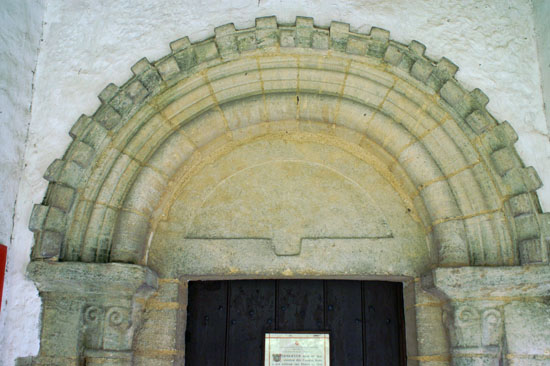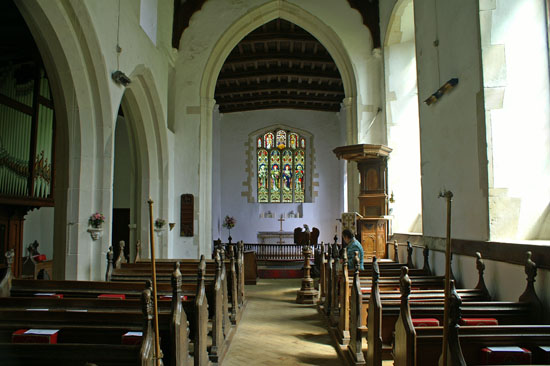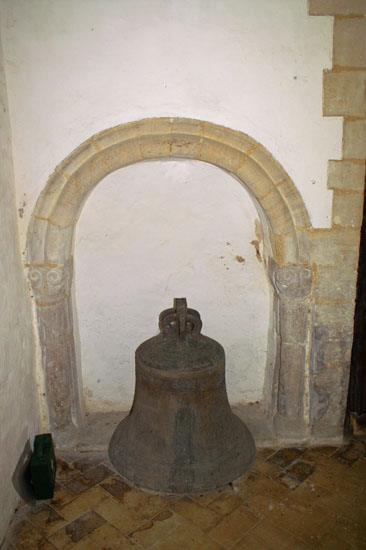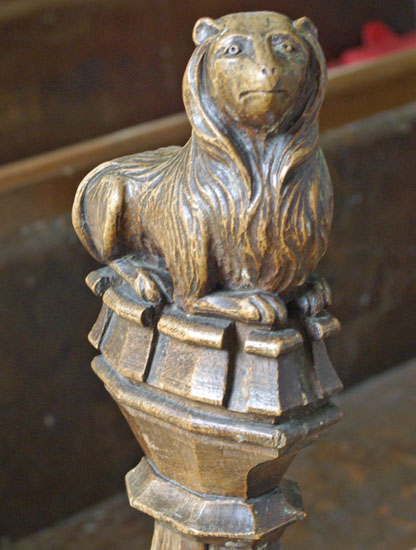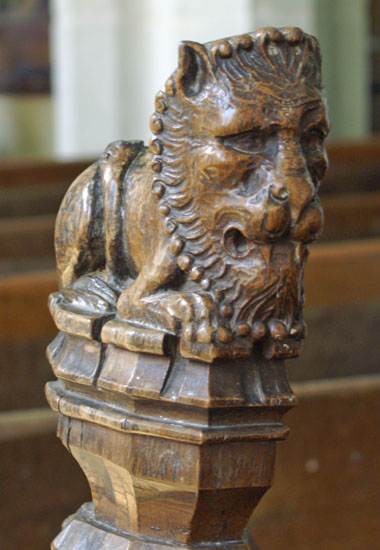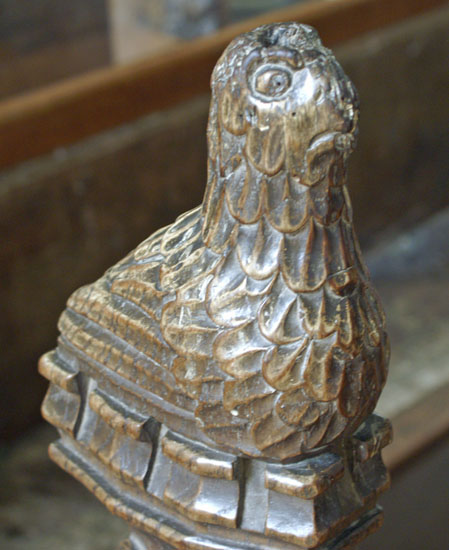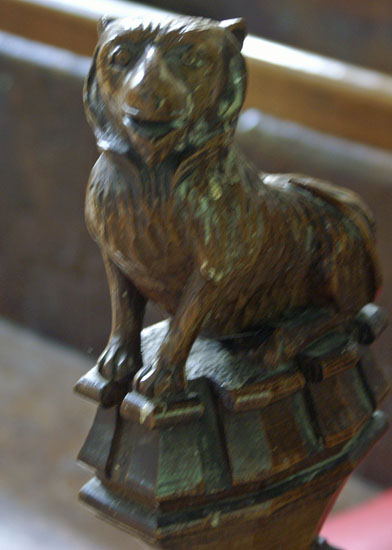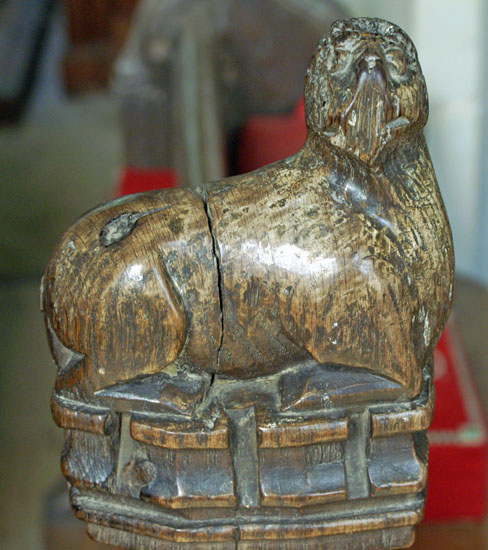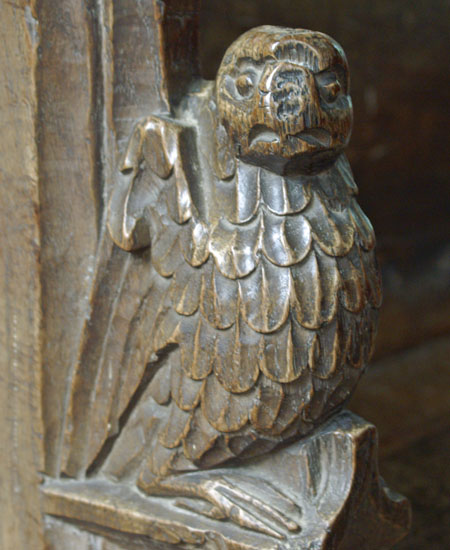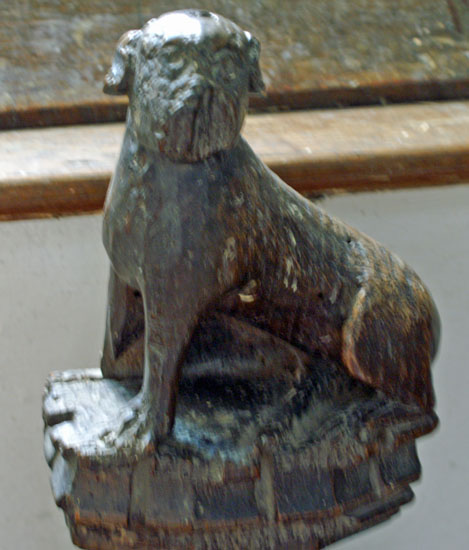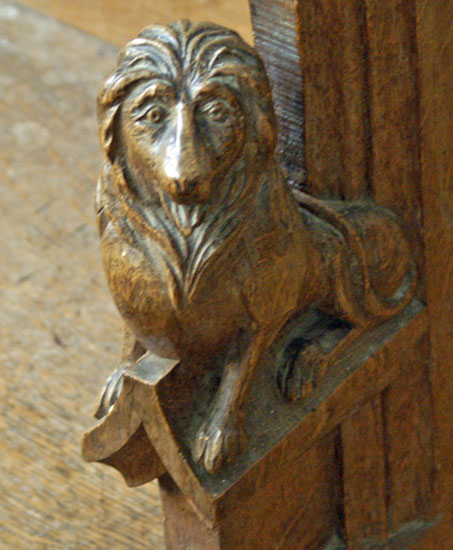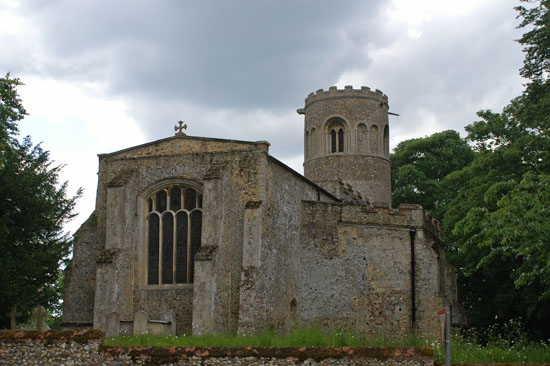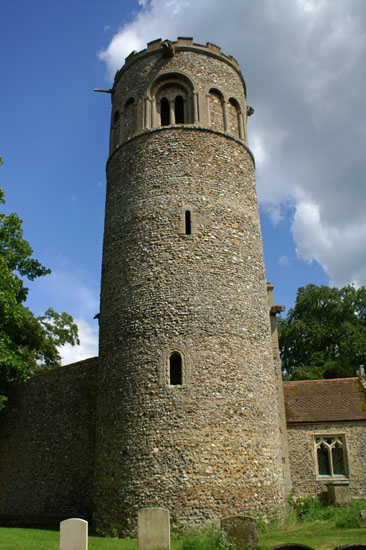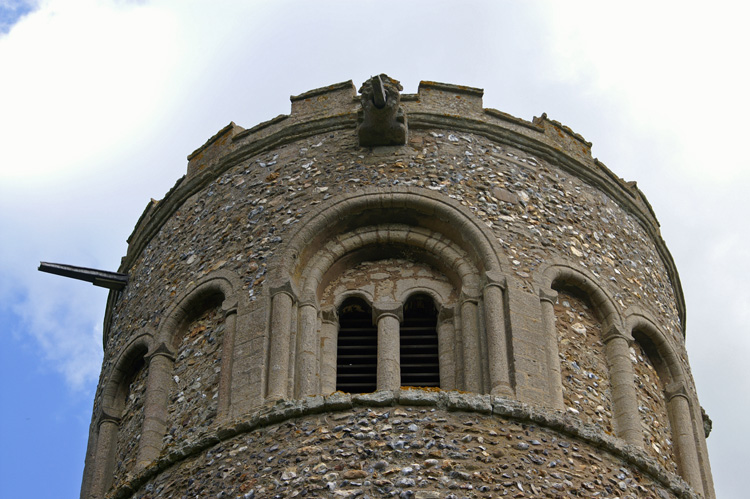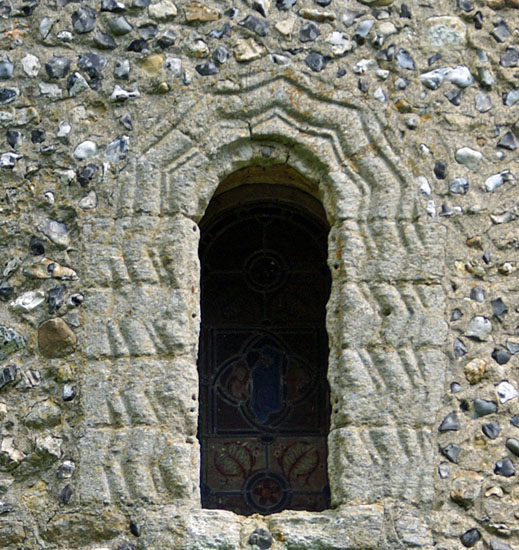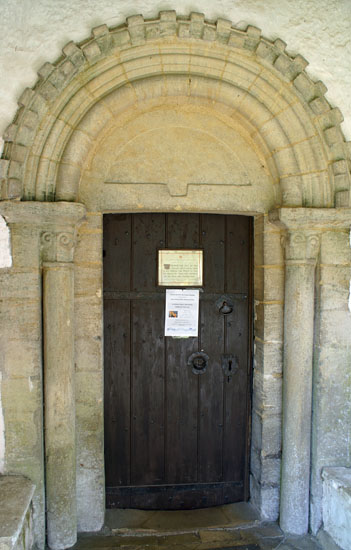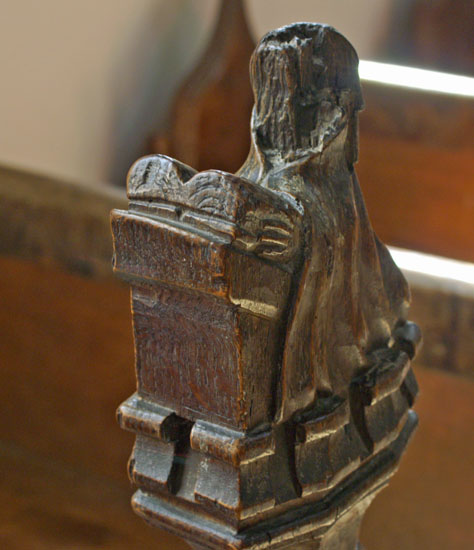|
The very height of it and the existence of a blocked round-arched doorway even further up surely point to a very tall nave such as the Saxons - and not the Normans - would have built? The doorway on the south side is rather plain for the Norman period too. That would imply that the south doorway may be contemporary with the tower. It is rather plain and its decorations are believed by some to be more Saxon than Norman. What seems most likely to me is that Little Saxham had a late Saxon tower and nave. The Normans probably rebuilt the chancel with an apse (it was replaced again in c14) and raised the tower.
The North aisle is early c14 in the Decorated style, presumably contemporary with the replacement of the chancel. Unusually, the arcade has arches with no adornment of any sort - not even capitals. The chancel arch is similarly plain.
Just inside the south door is a blind arch. The Church Guide points out that Pevsner believes that it was the original north door moved here when the north aisle was built. However, as they point out, this arch is built into the tower arch itself so Pevsner is surely wrong. Norman Scarfe, the Church Guide reports, has suggested that it was the background to the font that would have originally stood here.
Finally, the bench ends here are splendid as they are in so many Suffolk churches. There are still holes where the rush tapers would have been placed.
|
